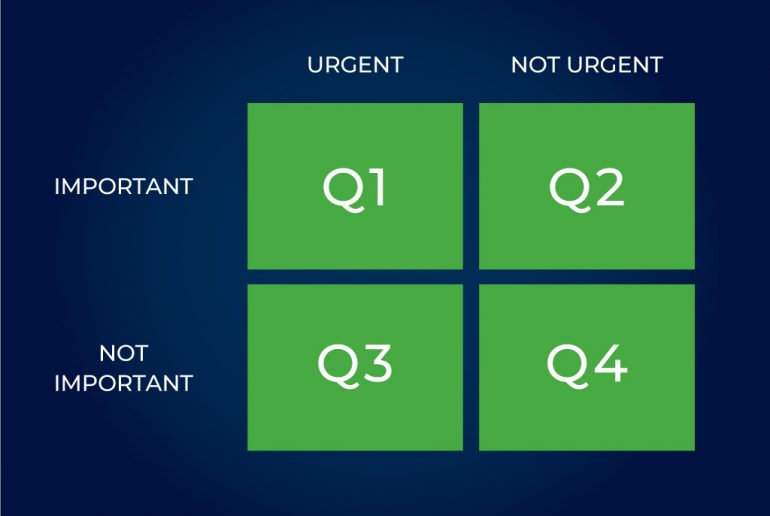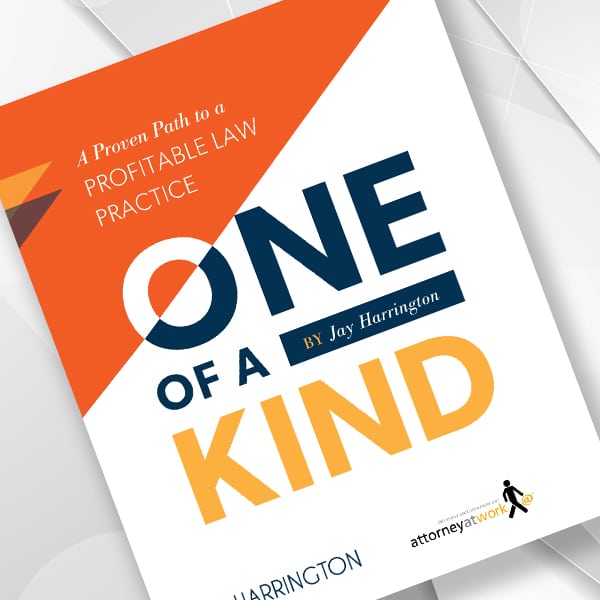Dwight Eisenhower created a system for processing the immense amount of decisions he had to make and tasks he had to perform as a wartime leader and then as U.S. president. The Eisenhower Matrix (discussed by fellow columnist Bull Garlington in a post here) consists of four quadrants.
Eisenhower used the matrix to systemize his response to various situations as follows:
- Quadrant 1 Important/Urgent: Do it immediately.
- Quadrant 2 Important/Not Urgent: Schedule it.
- Quadrant 3 Not Important/Urgent: Delegate it.
- Quadrant 4 Not Important/Not Urgent: Eliminate it.
Few people in history have faced the onslaught of momentous challenges that Eisenhower had to grapple with in the 1940s and 1950s. However, more people than ever seem to be busier than ever in today’s always-on, ever-connected culture. In this environment, a tool like the Eisenhower Matrix is invaluable.
Eisenhower Knew How to Delegate and Prioritize
The problem — which the Eisenhower Matrix helps clarify — is that for most of us there is a constant stream of Quadrant 1 tasks to confront. Everything is important. Everything is urgent. At least that’s how it feels.
This is especially true when it comes to the modern practice of law. Meetings. Phone conferences. Briefs. Due diligence. Daily timekeeping. The list goes on. An unceasing flood of demands keeps lawyers hopping.
The Quadrant 1 tasks must be done. But they often crowd out the Important/Not Urgent initiatives in Quadrant 2 that can really make an impact for a lawyer who wants to build a practice.
Unless you set aside time for strategic planning, network building, marketing activities and business development initiatives, the status quo hamster wheel will never stop spinning.
When it comes to making transformational change, it’s not about how fast you go. First and foremost, you must know where you’re headed.
Most lawyers have a rough sense of what they want to achieve in the future. Usually, a lawyer’s ideal future involves building a practice with a steady stream of their own clients that allows them to achieve some semblance of autonomy. Deep down, they understand that such an outcome is a long-term proposition. The rational thing to do, therefore, would be to put a long-term plan in place that moves them slowly and steadily toward their goal.
But of course, no one is purely rational. We’re all affected by cognitive biases that lead to suboptimal decision-making. While we all prefer big rewards over smaller ones, most of us have an even stronger preference for present rewards over future ones — even when the future ones are much bigger.
This concept, or cognitive bias, is called “hyperbolic discounting.” In short, the further away a reward is in the future, the smaller the immediate motivation to achieve it.
Instead of leveraging the immense power of compound interest, many people prioritize short-term spending over long-term investing. And, yes, many lawyers who want to build a profitable practice never find time to invest in the important but not urgent work that’s necessary to realize long-term rewards.
The Disconnect Between a Goal and Everyday Action
Goal-setting is a critical first step to achievement, but it’s not enough. A goal without action is merely a dream. Goals determine your direction, but action determines your progress.
To make goal-setting more effective, here are some principles to keep in mind:
- Make it specific. To be useful, a goal must be specific. “I want to develop business” is too loose. “I want to generate $250,000 in new business in the next 12 months” is better.
- Don’t have too many. If you have one clear goal, your direction is clear. Your actions can all be directed toward achieving a single outcome. Have too many goals and you may find yourself going in circles (or never get started in the first place).
- Understand its component parts. A big goal in the future is really a series of smaller, interim goals.
Deconstructive Goal-Setting
By keeping these principles in mind, you will achieve far more, over the long-term, than you thought possible through a process called deconstructive goal-setting. Deconstructive goal-setting, like all goal-setting exercises, involves envisioning a big, ambitious objective. But it doesn’t stop there. It forces you to work backward from your goal to determine and define all the steps necessary to get there.
Let’s say you’re a 40-year-old lawyer with no book of business. By the time you’re 45 you want to be generating half a million dollars per year in new business. You have five years to achieve your goal. Through a process of deconstructive goal-setting, you’d first take the time to understand what it takes to develop business. That includes things like 1) determining a target market, 2) building a network within that market, 3) establishing yourself as an expert and thought leader within that space, and 4) consistently getting yourself and your ideas in front of relevant decision-makers.
With that understanding in mind, it’s all about deconstructing these objectives into specific action steps within the constraints of allotted time.
You have five years to work with. To be on track for your five-year goal, you need to make a certain amount of progress this year. This means you need to be taking action this month, this week and, yes, this very day.
Put the Work in Now
See how this works? You’re capable of achieving big results way out in the future. But actually doing so is contingent on taking action every day. Don’t merely plan and hold loosely formed beliefs about what the future holds in your head. Put the work in now to make it happen. Here’s how:
- Define your goal. Think clearly about what you want. Write it down. This will allow you to understand what it takes. Don’t fixate on the result (e.g., getting clients). Focus on the underlying skills, qualities and attributes that will allow you to achieve the result. There are lots of sacrifices and trade-offs you’ll have to make to achieve what you want, so it’s important to understand them from the start.
- Deconstruct your goal into everyday actions. Work backward to understand the component parts of your big goal and set a series of smaller ones that will keep you working on a linear path within the time you have available. You should deconstruct your big goal to the point where you have a clear understanding of the appropriate action you should be taking today to be on the right path.
- Block time. You’re going to have all kinds of externalities, from urgent work demands to personal issues, attempting to derail you from making progress on your goals. Your calendar, which is likely filled with other people’s priorities, will be one of your biggest impediments. But it can be your best friend. If you have the courage and discipline to schedule an appointment with yourself every day, you’ll create the space and time to stay on track.
Invest in Yourself or No One Else Will
Charlie Munger is a self-made billionaire and Warren Buffett’s Berkshire Hathaway business partner. He’s also a lawyer. Early in his legal career, as he was busy doing client work and billing hours, he came to the important realization that he was his own most important client. For Munger, this meant he needed to recalibrate his thinking and start finding time to focus on himself and not just his paying clients.
Munger concluded that to get ahead and stay ahead, he needed to “sell” himself one hour of his time each day.
In her 2008 biography of Buffett, “The Snowball: Warren Buffett and the Business of Life,” Alice Schroeder recounts Buffett’s early impressions of Munger:
Charlie, as a very young lawyer, was probably getting $20 an hour. He thought to himself, ‘Who’s my most valuable client?’ And he decided it was himself. So he decided to sell himself an hour each day. He did it early in the morning, working on these construction projects and real estate deals. Everybody should do this, be the client, and then work for other people, too, and sell yourself an hour a day.
Most lawyers think the path to success lies in devoting as much time as possible working for paying clients. As Munger realized, the best investment you’ll ever make is investing in yourself. Set a big ambitious goal, then sell yourself an hour each day to work toward achieving it. You’ll find that you’re capable of more than you ever thought possible.
ONE OF A KIND
A Proven Path to a Profitable Law Practice
Almost every lawyer wants to command higher rates and attract more clients. But many are stuck pursuing ineffective strategies. Others don’t even know where to start. In his popular book, lawyer-turned-legal marketer Jay Harrington lays out a path for building a one of a kind, profitable niche practice.



















